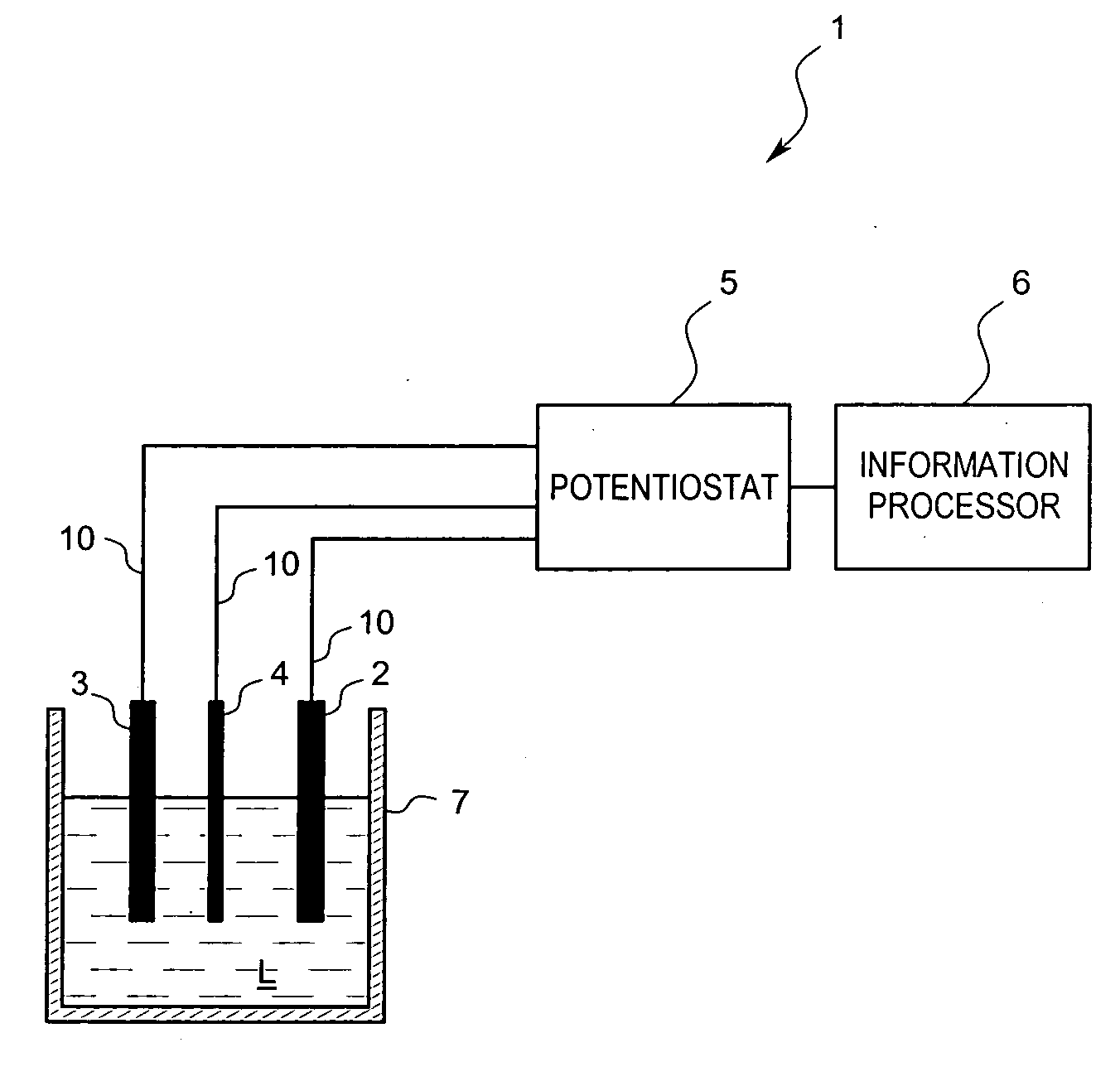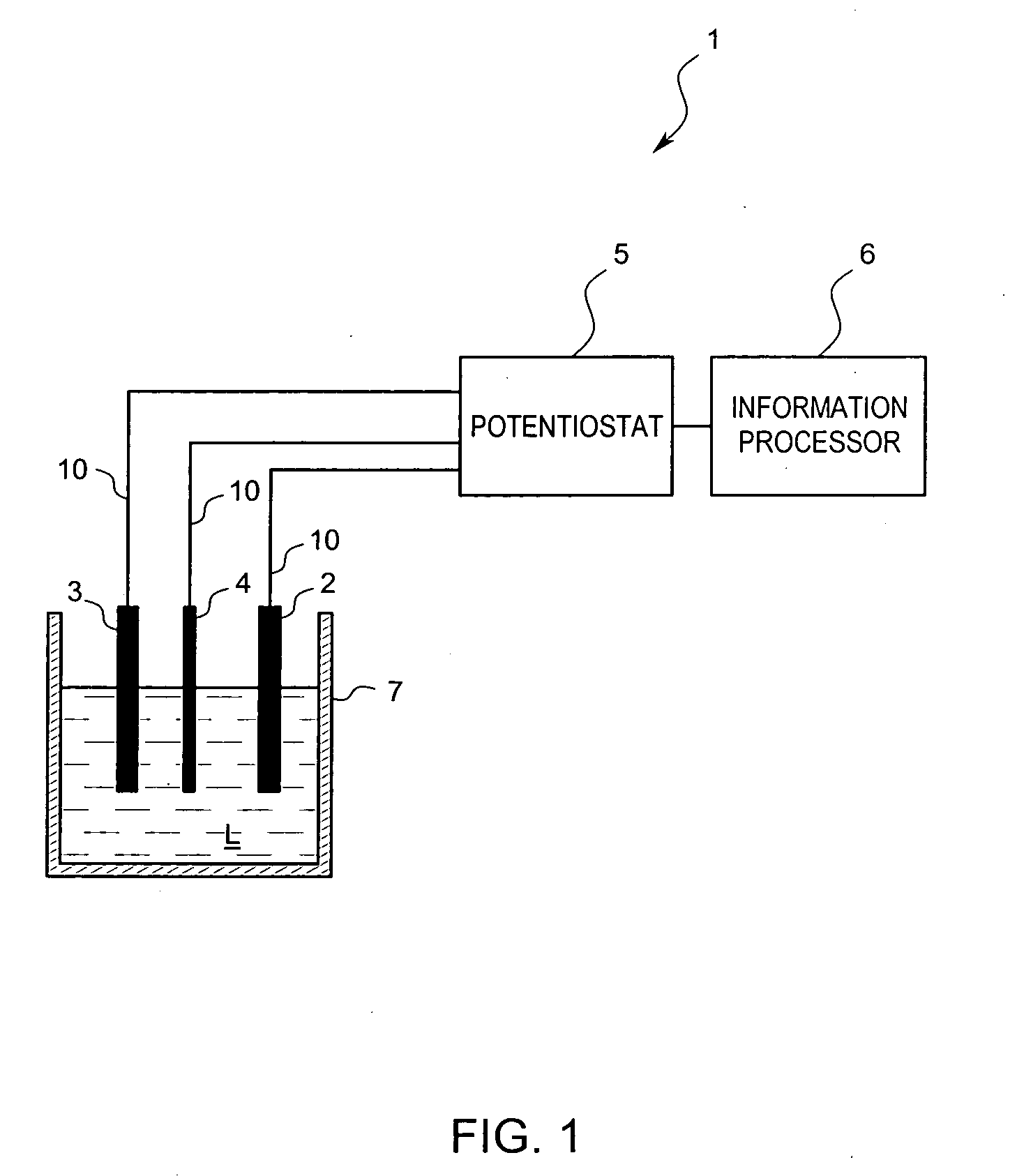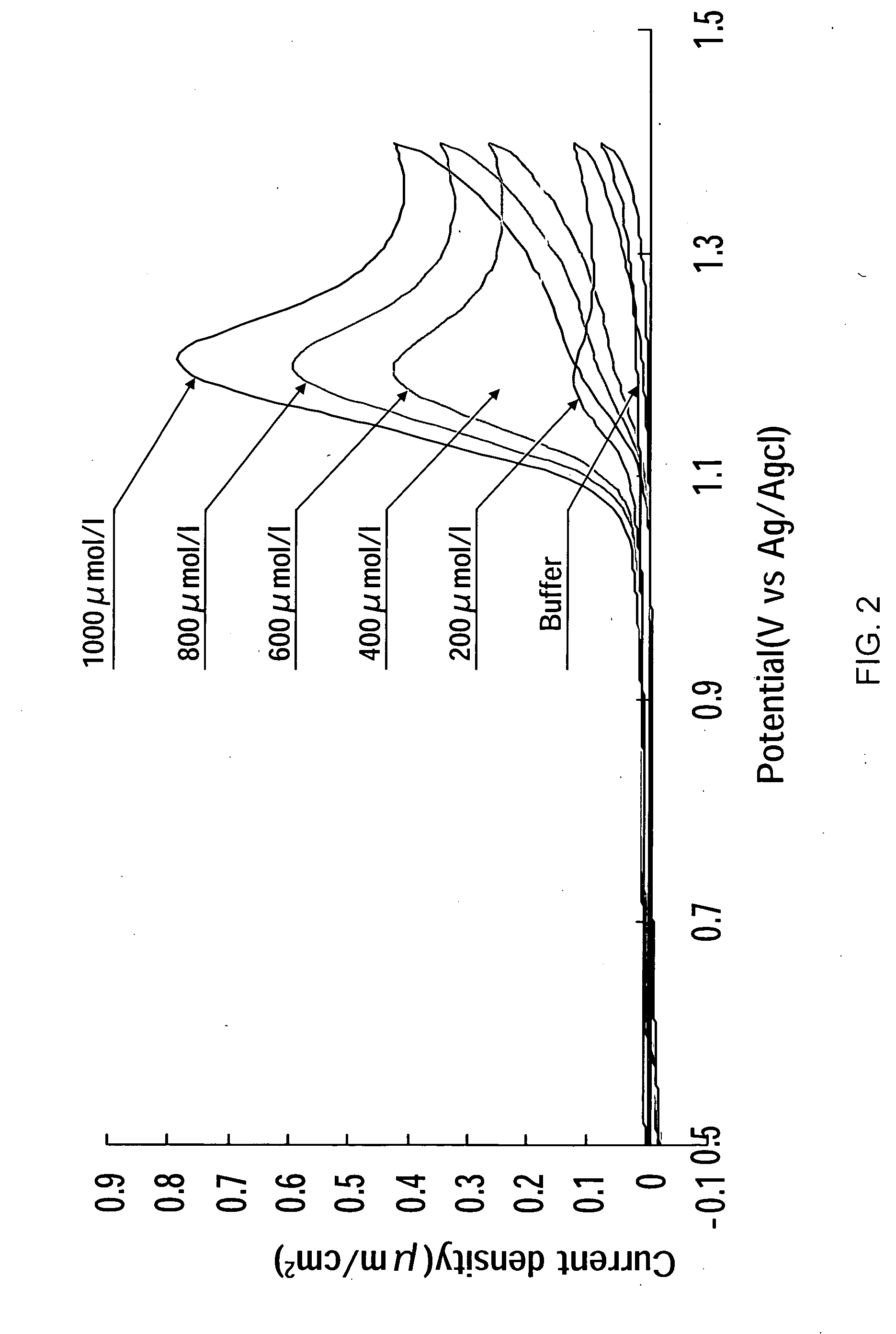Residual chlorine measuring method and residual chlorine measuring device
- Summary
- Abstract
- Description
- Claims
- Application Information
AI Technical Summary
Benefits of technology
Problems solved by technology
Method used
Image
Examples
first embodiment
[0031] Hereinafter, a residual chlorine measuring device according to the present invention will be described referring to the drawings.
[0032] A residual chlorine measuring device 1 according to the present embodiment is a batch-type electrochemistry measuring device which analyzes a sample solution L by dissolving an electrolyte in the sample solution L to produce an electrolyte solution and then, by applying a voltage to the solution, performs voltammetry measurement for analyzing the solution L due to a triple electrode system. As shown in FIG. 1, the basic constitution includes a working electrode 2, a reference electrode 3, a counter electrode 4, a potentiostat 5 for controlling the voltages of the working electrode 2, the reference electrode 3 and the counter electrode 4, and an information processor 6, such as a programmed microprocessor or controller, for calculating, for example, the concentration of residual chlorine contained in the sample solution L based on a current an...
second embodiment
[0059] Next, FIGS. 5 and 6 show results obtained by measuring the residual chlorine contained in the sample solution using the residual chlorine measuring device 1 according to the
[0060]FIG. 5 shows the time change of currents obtained by using the sample solutions L obtained by adjusting the concentration of the residual chlorine contained in the sample solution L to 0.5, 1.0, 1.5, 2.0, 2.5 ppm and measuring current values of the sample solutions L when setting the potential of the working electrode 2 to the reference electrode 3 to +1.1 V by the potentiostat 5.
[0061]FIG. 6 shows a calibration curve of concentration and current values when the applied voltage is +1.1 V based on the results obtained in FIG. 5. As shown in FIG. 6, the calibration curve in which the residual chlorine correlates a maximum current value is almost linear. Therefore, even a small amount (low concentration) of the residual chlorine can be correctly measured.
[0062] The residual chlorine measuring device a...
PUM
 Login to View More
Login to View More Abstract
Description
Claims
Application Information
 Login to View More
Login to View More - R&D
- Intellectual Property
- Life Sciences
- Materials
- Tech Scout
- Unparalleled Data Quality
- Higher Quality Content
- 60% Fewer Hallucinations
Browse by: Latest US Patents, China's latest patents, Technical Efficacy Thesaurus, Application Domain, Technology Topic, Popular Technical Reports.
© 2025 PatSnap. All rights reserved.Legal|Privacy policy|Modern Slavery Act Transparency Statement|Sitemap|About US| Contact US: help@patsnap.com



